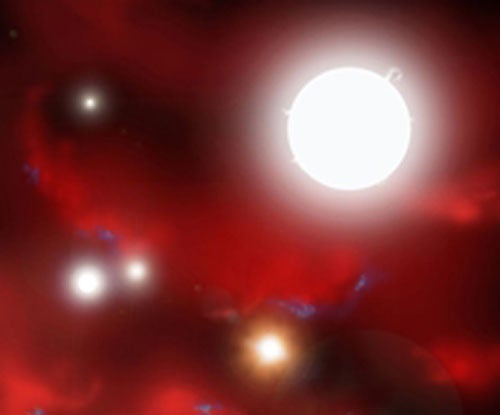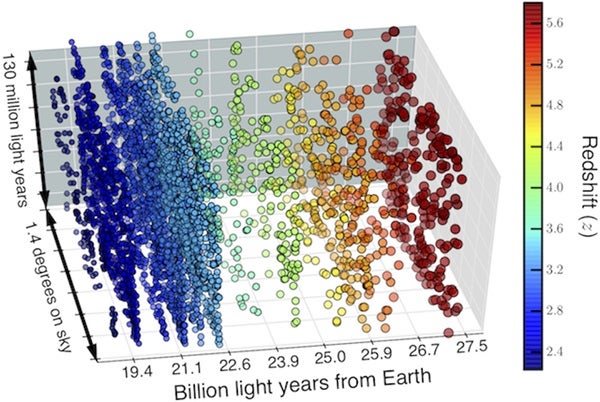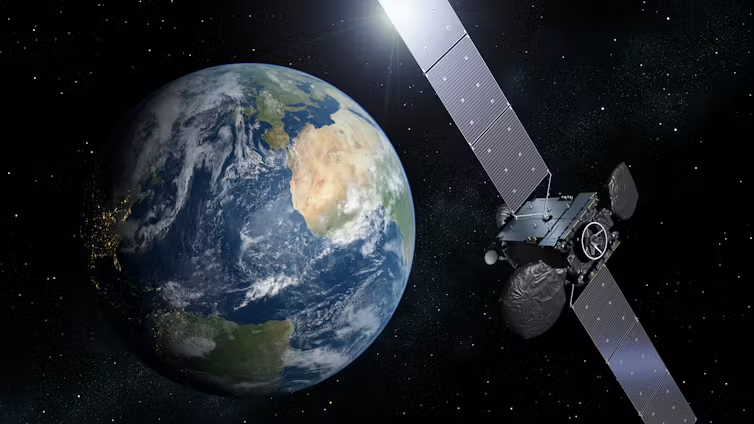Having a solid understanding of our infant universe helps us comprehend galactic evolution, early stellar trends, and the expansion of the cosmos. In an effort to increase our knowledge, a team of researchers, led by Dr. David Sobral of Lancaster University, used observational data to map out what the universe may have looked like between 11 and 13 billion years ago. In doing so, they uncovered nearly 4,000 unknown and ancient galaxies. The research was presented at the European Week of Astronomy and Space Science on April 4.
To carry out the research, the team used the Isaac Newton Telescope in the Canary Islands and the Subaru Telescope in Hawaii to look at the galaxies as they were soon after the Big Bang. Since these galaxies are so far away, it takes billions of years for their light to reach Earth. So when it does, we see the galaxies as they appeared billions of years ago.
However, the expansion of the universe impacts how we see light from the most distant, and therefore ancient, galaxies. Astronomers currently believe that the universe is slowly expanding outward due to the repulsive nature of dark energy. This causes light from the most distant objects to stretch out and appear more red than it otherwise would — a phenomenon known as “redshift.” This redshifted light can be measured to establish a galaxy’s distance from Earth and how long it took its light to reach us. From this, astronomers can determine how far back in time they’re viewing the galaxy. By observing areas with certain redshift wavelengths, they can look at specific epochs in history.
To create the 3-D map, the research team observed an area of the sky in the direction of the constellation Sextans, one of the most studied galactic regions outside of the Milky Way. To do this, they equipped the two telescopes with medium and narrow band camera filters, which allowed them to hone in on various epochs.
“We used large amounts of data taken with 16 special filters on wide field cameras and processed them here in Lancaster to literally slice the Universe in cosmic time and time-travel to the distant past with 16 well-defined cosmic time destinations,” said researcher Sergio Santos, a PhD student at Lancaster University, in a press release.
The research team created a map that outlines how far each of the 4,000 new galaxies is from Earth. The colors of the circles, which represent the galaxies, show the amount of redshift observed. The closer the galaxies are to the red side of the map, the further away from Earth they lie.
Each galaxy uncovered in the 16 sample epochs existed shortly after the Big Bang, allowing the researchers to take an in-depth look at ancient galaxy formation.
“The bulk of the distant galaxies we found are only about 3,000 light-years across in size, while our Milky Way is about 30 times larger. Their compactness likely explains many of their exciting physical properties that were common in the early Universe”, said Ana Paulino-Afonso, a PhD student at Lancaster University and member of the research team. “Some of these galaxies should have evolved to become like our own and thus we are seeing what our galaxy may have looked like 11 to 13 billion years ago.”
The team also found trends in star formation that differ from what we’ve observed in the Milky Way. “These early galaxies seem to have gone through many more ‘bursts’ when they formed stars, instead of forming them at a relatively steady rate like our own galaxy. Additionally, they seem to have a population of young stars that is hotter, bluer and more metal-poor than those we see today,” said Sobral.
Traveling into the universe’s distance past allows researchers to study the galactic activity that followed the Big Bang, see what the Milky Way may have looked like in its infancy, and, most importantly, add to the historical timeline of our mysterious universe. But with 4,000 new galaxies being uncovered in a single study, our understanding of the universe is bound to shift as other galactic unknowns begin to reveal themselves, too.











